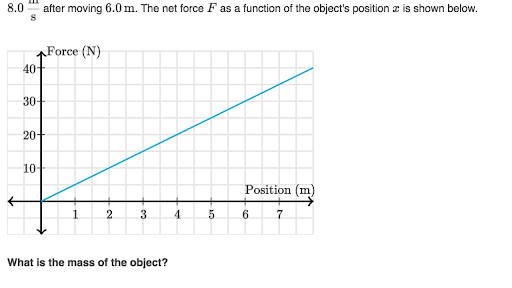- A service of Practice Velocity Urgent Care Solutions® Confirmation. You have a confirmed Check-in. Instructions: Please bring your printed confirmation to the clinic ten minutes prior to your appointment time. Thank you for using ZipPASS. ZipPASS ID: Check-in Time: Last Name: First Name.
- Please contact Practice Velocity to determine what applications you need to install and where they can be found.
Practice Velocity, LLC. Medical Billing. Business Profile. Practice Velocity, LLC. 8777 Velocity Dr. Location of This Business 8777 Velocity Dr, Machesney Park, IL Email this Business. Experity (formerly Practice Velocity & DocuTap) is a cloud-based electronic medical records (EMR), practice management, and medical billing software solution built for on-demand care providers of all sizes and specialties including occupational medicine, pediatrics, and primary care.
VAB is equal to 7i And
VBA=-7i
= -7i
= 7i
Magnitude of both is same = 7
Explanation:
In the given question,
Velocity of the particle A = 4i
Velocity of the particle B = -3i
Now,
We have to find the value of which is define as,
∴ = -7i
Also magnitude = 7
As we know that is oppposite of ,that is,
= -
∴ = - (- 7i) = 7i
Also magnitude = 7
answer:
explanation:
well about dp its worst
ur answer

screw gauge is an instrument that is used to accurately measure the volume of the irregular lamina. it is made of a u-shaped frame fitted to a screwed spindle that is attached to a . a scale graduated in mm is engraved parallel to the axis of the .
answer:
explanation:
when a bullet is fired from the gun, due to reaction force , the gun recoils in the direction opposite to the motion of bullet. the velocity with it recoils is called as recoil velocity. derivation for recoil velocity of gun: initial velocity of gun and bullet are at rest
Practice Velocity’s eRegistration feature fast-tracks your patient flow by getting your patients out of the waiting room faster. Patients quickly register themselves on a tablet right as they walk into your clinic, freeing your front desk staff to work on more complicated registration and insurance issues.
How does it work? Here’s an overview of the process; a more complete, step-by-step look at the eRegistration process was provided in your release notes.

Like with any other patient, your front desk staff verifies your patient hasn’t visited your clinic before. However, instead of choosing “register,” they choose “eRegister” so they can get an eRegistration PIN for the patient.
The front desk staff person obtains the PIN and enters it into the tablet and then hands the tablet to the patient so the patient can move to the waiting room to complete eRegistration. Some urgent care centers choose to exchange the tablets for patients’ driver’s licenses to ensure the tablets are returned.
The first screen asks the patient if they are experiencing a medical emergency. If the answer is “yes,” the patient is instructed to immediately return to the front desk. If the answer is “no,” the patient continues with eRegistration.
The next few screens in the eRegistration system are really similar to how patient information collection is set up in PVM. Patients fill out their contact information, their emergency contact information and employer information (particularly if they are registering under a worker’s compensation claim). If you have a database of employers already built into PVM, patients can start to type in the name of the company to find the company. They can then select the company, and the company’s information will auto-fill.
This section is especially beneficial for existing patients because their information will auto-populate; they just need to review and update their information.
Again, like PVM, patients can then enter their primary care physician and pharmacy information. There are search functions for both, so patients can find the correct providers and facilities. If your urgent care center offers in-office medication dispensing, there’s an option for patients to indicate they are interested in purchasing medications right at your center.
The next screen allows the patient to fill out guarantor information. When designing this section of the eRegistration system, Practice Velocity kept the patient in mind and made the language as simple as possible to minimize confusion.
Next, patients can electronically sign any forms you require at your urgent care center, such as HIPAA forms or financial policies. The eRegistration system allows patients to review the documents right on the tablet so they know exactly what they are accepting.
If a patient doesn’t e-sign a document during the eRegistration process, front desk staff will be notified through PVM when reviewing the information the patient entered on the tablet. They can then start a conversation with the patient to make sure they understand the documents. If the patient then chooses to sign, staff can either easily pull those documents back up on the tablet or print and scan them.

The next step after the eSign process is for patients to enter their insurance information, including insurance policy information, policy holder information, policy holder address, and any secondary insurance. Like the primary care provider and pharmacy section, there is a search function that allows patients to search for their insurance carrier.
If the patient selects “cannot find my insurance” or “no address on insurance card,” your front desk staff can help the patient once they return to the front desk. Otherwise, a database of insurance carriers will appear based on the information the patient enters in the search boxes.
At this point, the eRegistration process will start taking patients through their primary complaint and histories, so the data will populate in VelociDoc. Some urgent care centers prefer to have clinicians take this kind of information, so you might want to have the eRegistration process stop your patients right here and have them hand the tablets back to the front desk. The eRegistration system is built to stop at various points throughout the eRegistration process, so this is perfectly fine.
If you want your patients to continue with the eRegistration process, you’ll have them choose an historian – patient, mother, father or other – before proceeding with the eRegistration process.
On the next screen, the patient will see a human figure on the left. They’ll select the area of their body that is affected (head, neck, arm, etc.), which will prompt several options to appear on the right side of the screen. The patient will then select the specific problem before proceeding to the next screen. For example, let’s say the patient selects the neck as the area of their body that is affected. From the options on the right that appear, they then select “sore throat.” This will tell the provider the specific reason why the patient has come for medical care.
The “Severity” screen takes patients through HPI questions, such as how often the complaint affects the patient, its severity on a 0-10 scale, whether the complaint is an injury, etc.
The patient will then describe the onset of the problem by providing either a specific or approximate date and time.
If the patient is currently taking any medications, they can search for their medication by typing in the name of the medication or selecting the letter the medication starts with. Once the patient finds the correct medication, they specify the medication route, the dosage, the number of pills and the frequency. If the patient selected the wrong medication, they can select “Oops, I’m not taking this” to go back.
The eRegistration system then takes the patient through the review of symptoms (ROS) process with color-coded buttons: red for “yes, I’m having this symptom,” and green for “no, I’m not having this symptom.”
To make the process as easy and convenient for the patient as possible, there is an option at the bottom of the screen for the patient to select “No To All Unanswered.
So instead of having to manually click “No” to any symptom they aren’t experiencing, the patient can click “No To All Unanswered.” This will automatically click “No” for any symptom the patient did not already click “yes.”
The next step is the patient’s surgical history. If the patient has never had surgery, they can select “no” and proceed to their Social History.
If the patient has had surgery in the past, they can select “yes” to be taken to the Surgical History section, where they will provide further details on any past surgeries.
The patient will then fill out their social history, such as tobacco, alcohol and drug use, and whether they are currently breastfeeding,
followed by their medical history. As with most of the screens in the eRegistration system, patients can fill out the Medical History section quite quickly by using the “No To All Unanswered” button, which auto-selects “No” for any unanswered medical history question.
Practice Velocity Emr
The last section of the eRegistration process requires patients to answer family history questions about their biological fathers and mothers.
This completes the eRegistration process. The screen notifies the patient that their portion of registration is done, and the front desk staff member will prompt the patient to return the tablet.
It should be noted that there is an option for the patient or the urgent care staff to stop the eRegistration process at any time using the “Exit and Come Back Later” or “Abort” buttons at the bottom of every screen, so if the patient gets called back into an exam room before they complete this process, the information they have entered will be saved in the system.
Once the patient completes the eRegistration process and returns the tablet, the front desk staff goes into PVM and reviews the information they entered. The logbook will show that eRegistration is complete.
Practice Velocity Install
Your urgent care practice can decide which of your patients are right for the eRegistration process. There are certainly some patients who will still want to go through the standard, face-to-face registration process with your front desk staff, but those who are comfortable with technology can zip through registration by sitting down with a tablet and quickly answering some standard registration questions. The technology investment for your urgent care practice is quite minimal because low-end tablets will work just fine; all you need is a set of tablets capable of supporting an internet connection.
Www.practicevelocity.com
Integrating the eRegistration process into your urgent care practice will get your patients in and out of your center so much faster, increasing patient satisfaction and, ultimately, your bottom line.